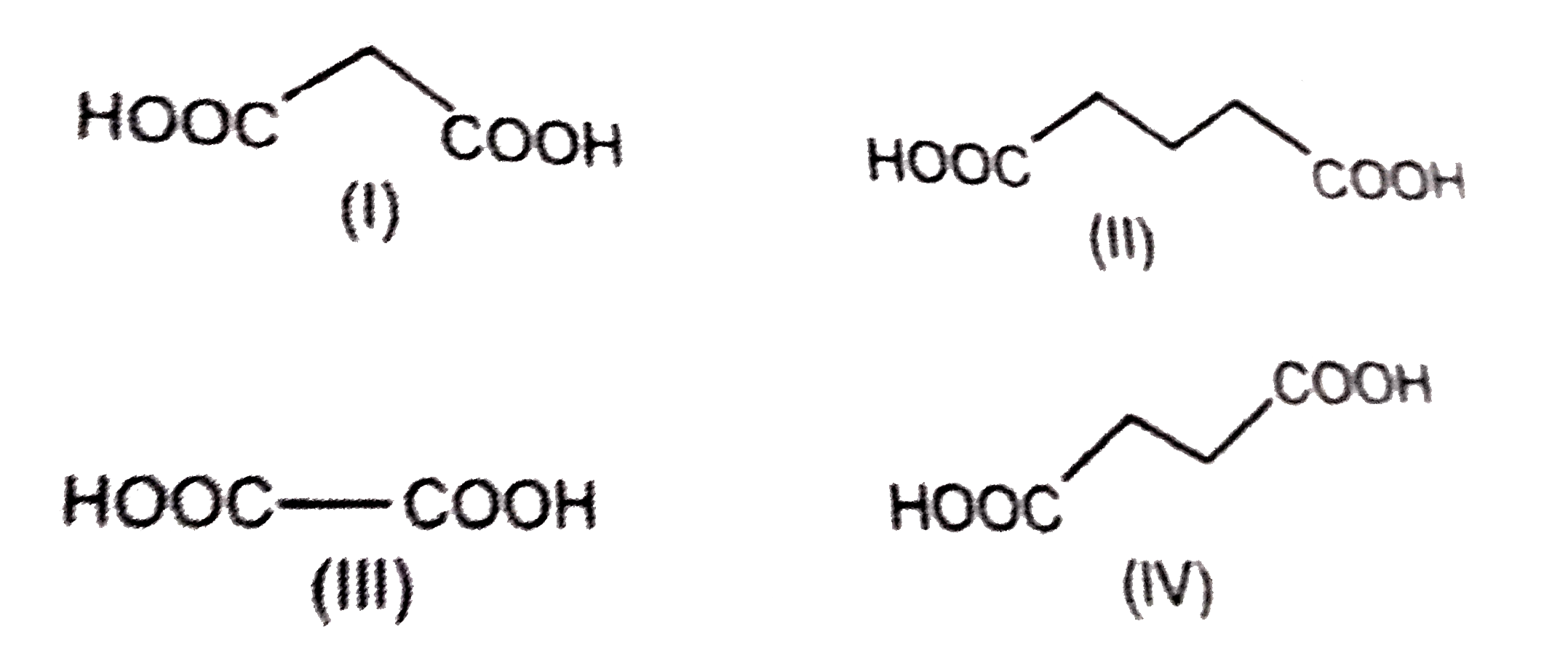Assertion. In case of polyprotic acids, first ionization constant in lowest.
Reason. The removal of first proton is most difficult. Further ionization becomes easier.
If both assertion and reason are true, and reason is the true explanation of the assertion.
If both assertion and reason are true, but reason is not the true explanation of the assertion.
If aasertion is true, but reason is false.
If both assertion and reason are false.
The correct Answer is:D
To analyze the assertion and reason provided in the question, we can break it down step by step.
Step 1: Understanding Polyprotic Acids
Polyprotic acids are acids that can donate more than one proton (H⁺) per molecule. Common examples include sulfuric acid (H₂SO₄), phosphoric acid (H₃PO₄), and carbonic acid (H₂CO₃).
Step 2: Ionization Constants
For polyprotic acids, each proton removal corresponds to a different ionization constant (K₁, K₂, K₃, etc.). The first ionization constant (K₁) is associated with the removal of the first proton, the second ionization constant (K₂) with the removal of the second proton, and so on.
Step 3: Comparing Ionization Constants
In general, the first ionization constant (K₁) is lower than the subsequent constants (K₂, K₃) for polyprotic acids. This indicates that the first proton is removed less readily compared to the subsequent protons.
Step 4: Difficulty of Proton Removal
The assertion states that the first ionization constant is the lowest. The reason provided states that the removal of the first proton is the most difficult, which is true. This is because the remaining species after the first proton is removed is often negatively charged, making it less favorable to remove another proton due to increased electrostatic repulsion.
Step 5: Conclusion
Both the assertion and the reason are correct. The assertion that the first ionization constant is the lowest is supported by the reason that the removal of the first proton is indeed the most difficult.
Final Answer
- Assertion: True - In case of polyprotic acids, the first ionization constant is the lowest.
- Reason: True - The removal of the first proton is the most difficult, making further ionization easier.
Polyprotic acids are acids that can donate more than one proton (H⁺) per molecule. Common examples include sulfuric acid (H₂SO₄), phosphoric acid (H₃PO₄), and carbonic acid (H₂CO₃).
For polyprotic acids, each proton removal corresponds to a different ionization constant (K₁, K₂, K₃, etc.). The first ionization constant (K₁) is associated with the removal of the first proton, the second ionization constant (K₂) with the removal of the second proton, and so on.
In general, the first ionization constant (K₁) is lower than the subsequent constants (K₂, K₃) for polyprotic acids. This indicates that the first proton is removed less readily compared to the subsequent protons.
The assertion states that the first ionization constant is the lowest. The reason provided states that the removal of the first proton is the most difficult, which is true. This is because the remaining species after the first proton is removed is often negatively charged, making it less favorable to remove another proton due to increased electrostatic repulsion.
Both the assertion and the reason are correct. The assertion that the first ionization constant is the lowest is supported by the reason that the removal of the first proton is indeed the most difficult.
- Assertion: True - In case of polyprotic acids, the first ionization constant is the lowest.
- Reason: True - The removal of the first proton is the most difficult, making further ionization easier.
Topper's Solved these Questions
- BOOK - PRADEEPCHAPTER - EQUILIBRIUMEXERCISE - Competition Focus (VII. Numerical Value Type Questions) (In Decimal Notation)1videos
EQUILIBRIUM
- BOOK - PRADEEPCHAPTER - ENVIRONMENTAL CHEMISTRYEXERCISE - COMPETITION FOCUS (JEE(Main and Advanced)/Medical Entrance (VI.ASSERTION-REASON) Type II6videos
ENVIRONMENTAL CHEMISTRY
- BOOK - PRADEEPCHAPTER - EQUILIBRIUM IN PHYSICAL AND CHEMICAL PROCESSESEXERCISE - Competition Focus (Jee(Main and advanced)/Medical Entrance) VIII. ASSERTION - REASON TYPE QUESTIONS (TYPE - II)10videos
EQUILIBRIUM IN PHYSICAL AND CHEMICAL PROCESSES
Similar Questions
Knowledge Check
- Question 1 - Select One
First ionization energy is the lowest with:
ALeadBCarbonCSiliconDTin - Question 2 - Select One
First ionization energy is the lowest with:
ALeadBCarbonCSiliconDTin - Question 3 - Select One
Which element has the lowest first ionization energy?
ABBCCAIDSi
Which of the following has the lowest first ionization thalpy?
View SolutionAssertion :- In case of chemical adsorption, xm first increase then decrease with temp.
Reason :- The intial increase is due to the fact that heat supplied acts as a activation energy. The decrease afterwards is due to the exothermic nature of adsorption at equilibrium.View SolutionCorrect statements about the percentage ionization of weak acids in water include which of the following ?
(P)The percentage ionization increases as the ionization constant of the acid becomes larger.
(Q)the percentage ionization increases as the concentration of the acid becomes smaller.View SolutionThe increasing order of the first ionization enthalpies of the elements B,P,S and F (lowest first) is:
View SolutionIndicate the correct of acidity (first ionization) in the following dicarboxylic acids :
 View Solution
View Solution

